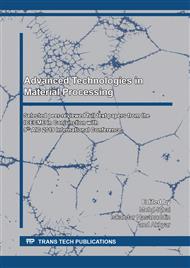p.61
p.67
p.73
p.81
p.90
p.100
p.108
p.115
p.125
Effect of Different Gating Systems and Sand Mold Binder on the Cast-Quality of Bicycle Frame Produced through Sand Casting Method
Abstract:
The bicycle frame produced through the metal casting process by recycling aluminum alloys can be an environmentally friendly alternative solution. Mold types and gating systems used generally affects the quality of the casting product. In this experiment, the effect of gating number and riser type variations (for sand binder) observed on casting defects, hardness, and impact value. Subsequently, chemical composition and microstructure of recycled aluminum metal from bicycle frames produced through sand mold casting are also evaluated. Three types of risers are bentonite, water glass, and furan resin. The results indicate that mold with two gating system has a low porosity as casting defects. The cast-bike frame produced using furan resin reaches the highest hardness value of 46 HRB compared to water glass and bentonite as the binder of sand-molds. The impact test observes 3.9 J carried out by the ASTM E23 sample at room temperature.
Info:
Periodical:
Pages:
100-107
Citation:
Online since:
July 2020
Authors:
Keywords:
Price:
Сopyright:
© 2020 Trans Tech Publications Ltd. All Rights Reserved
Share:
Citation:


